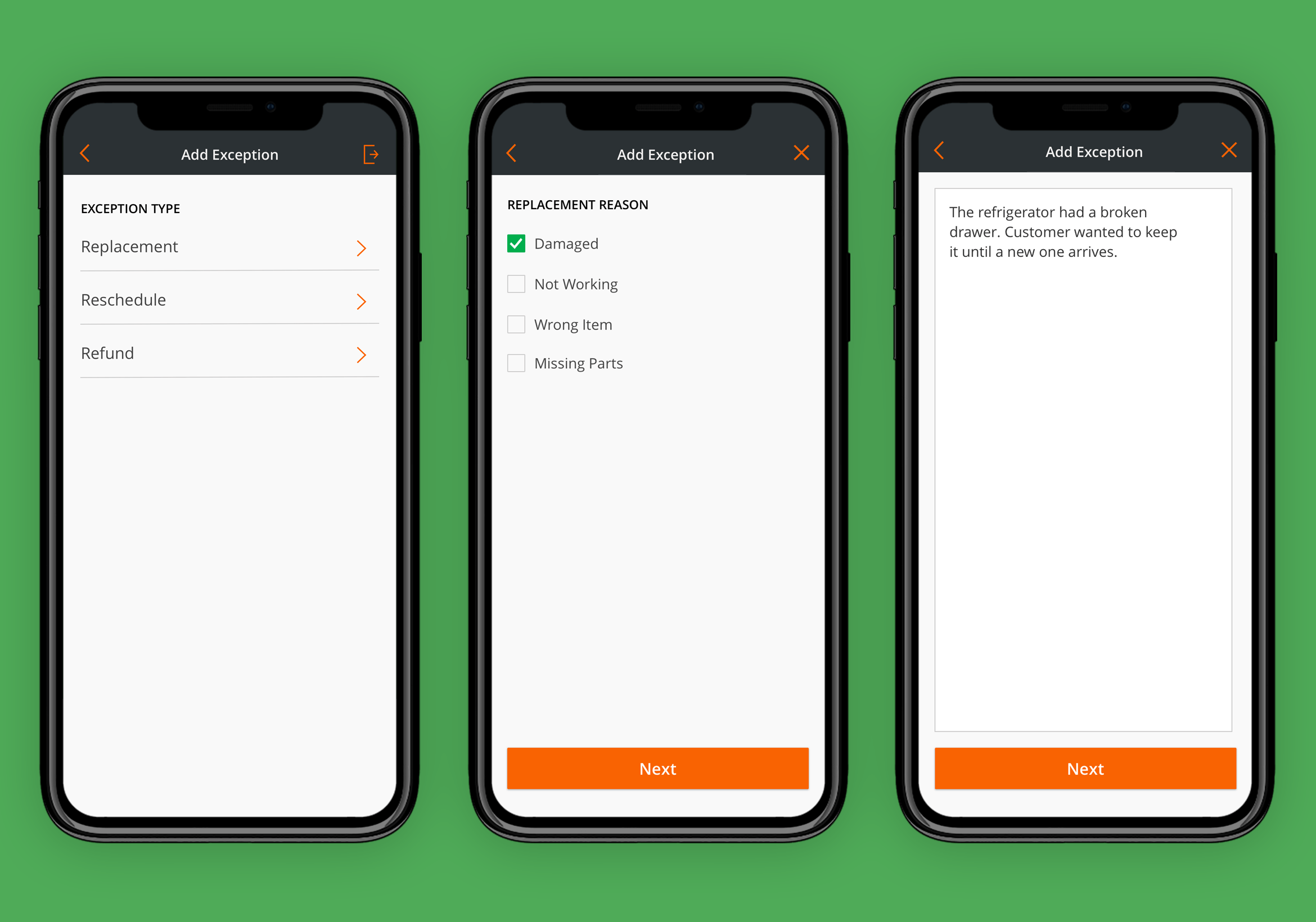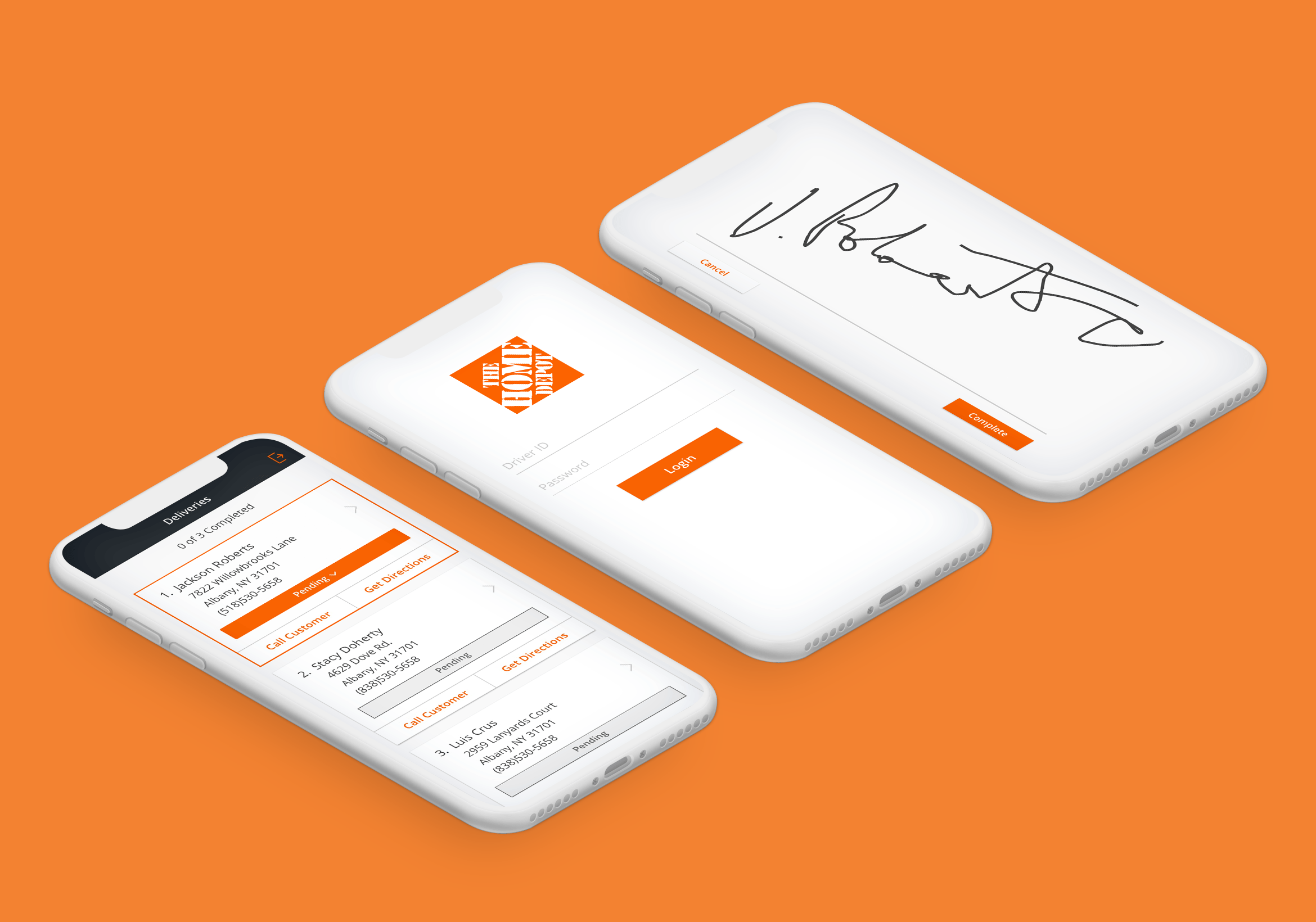The Home Depot (THD) was facing issues with their appliance home deliveries. The problem was that drivers were having difficulty using the mobile delivery app which led to mistakes being made and ultimately poor customer experiences.
The Home Depot
Improving appliance home delivery
UX Research
Interface Design
Prototyping
Client Enablement
My responsibility was to explore the problems delivery drivers were having with the existing delivery app. Our team developed a new product to resolve their delivery issues. I also coached the product designer from THD to practice user-centered design so she could move the product forward once we rolled off the engagement.
Goals
Data Integrity
By replacing the mobile app used by delivery drivers we aimed to:
- Reduces the number of phone calls drivers made to dispatch to resolve issues.
- Increase driver visibility so dispatch knows how long deliveries take.
- Reduce the amount of errors entered into the app by drivers.
Research Methods
Building Empathy

We observed THD drivers in 5 different states.
User Interviews
We interviewed drivers, dispatchers, customer services reps, and operations managers so we could understand how complex deliveries. We learned about SOPs, internal systems that communicated with each other, etc.
Ride Alongs
We spent hours driving around with delivery drivers to see the issues they faced with the technology and with the job.
Time Studies
We timed how long it took to status jobs using the old app so that we could have a baseline for improvement with our app.
Heuristic Evaluation
We evaluated the old app to determine what was making it so difficult to use. We used this information to learn what not to do with our app.
Insights
- Drivers lacked visibility into some details of a delivery such as last minute changes, revisits, or parts & accessories. This caused them to call dispatch frequently.
- In-app GPS integration was often inaccurate caused drivers to arrive at the wrong location. Their workaround was to hand type addresses into another mapping app.
- The app didn't allow drivers to capture enough information about exceptions (damaged, returns, etc.). Therefore they had to call into dispatch to explain every time, which was on average, 6 times per day.

Delivery exception flow.

Prototype map of Hermes.
Prototyping
Evaluative Research
During prototype tests we uncovered several insights including:
- Drivers wanted the flexibility to pick deliveries out of order in case a customer calls and says they will not be home at the scheduled delivery time.
- Drivers want to know the time window that was given to the customers since they may need to skip a delivery and come back later.
- Added visual cues to indicate which delivery was active and at what stage a delivery was in.
- Drivers understood natural language copy for statusing buttons more than formal copy. "On My Way" instead of "Start Delivery".

Delivery list and detail page

Delivery exception flow

Clear and direct language for statusing deliveries
Icon Design

